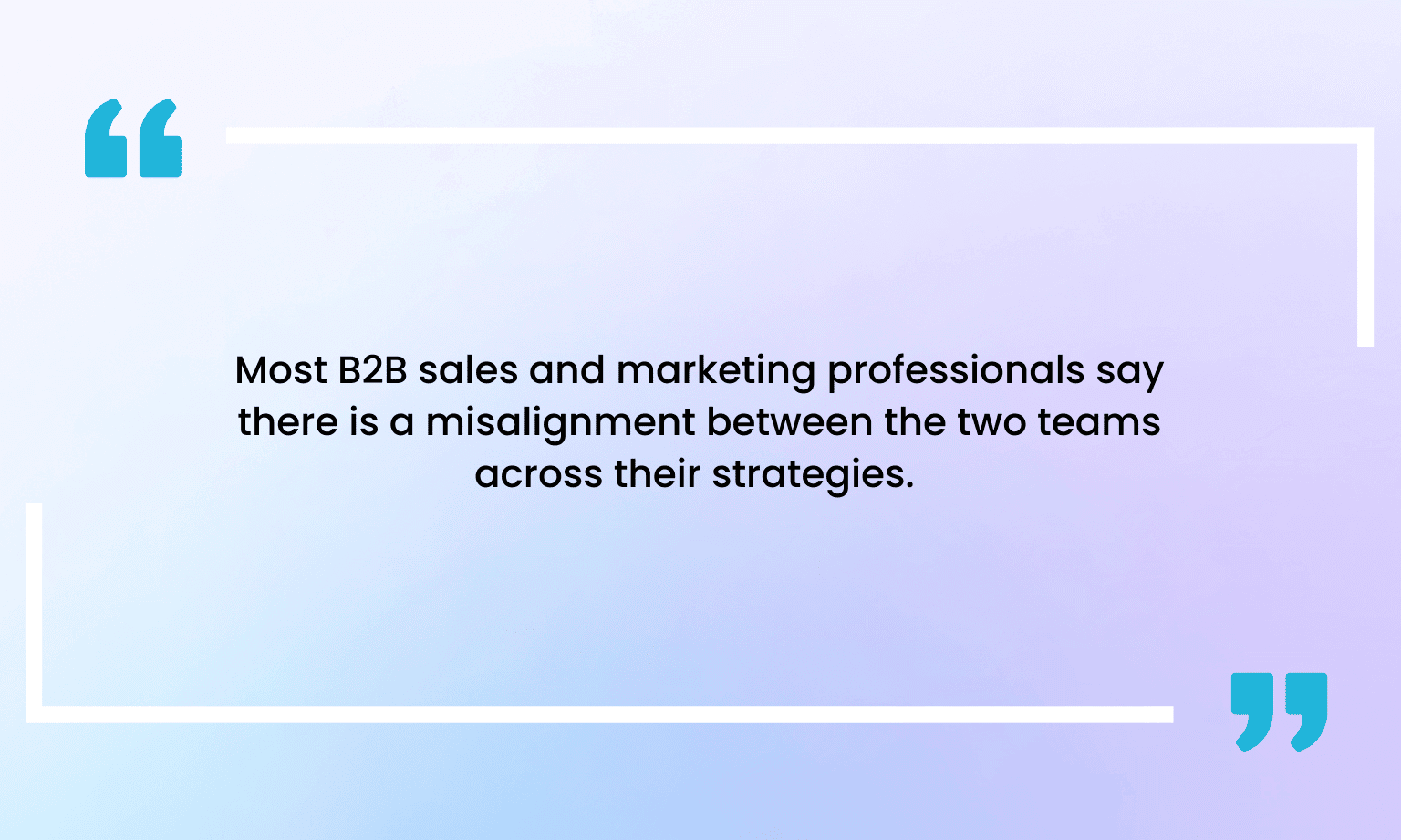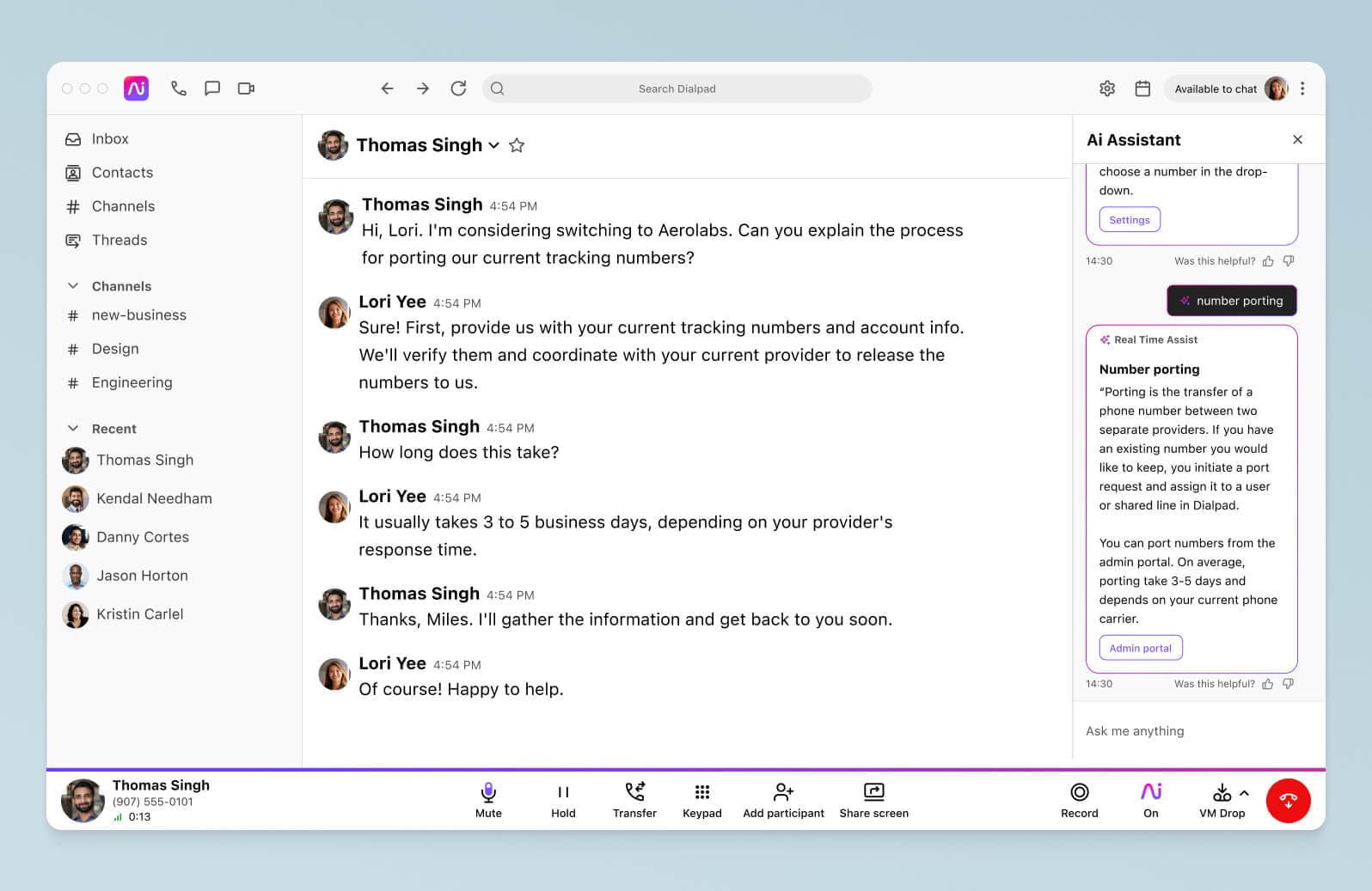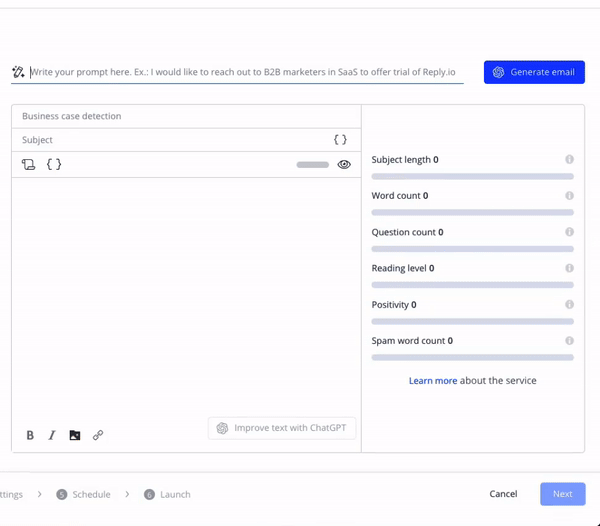Hands-on guide to building an AI-driven sales engagement strategy

SEO Outreach Specialist

Share
Every customer interaction is a grand opportunity for businesses to establish meaningful connections, build lasting relationships, and potentially make the sale.
And even though the methods have drastically changed over the years, shifting from mass ‘spray and pray’ cold calls and emails to meaningful outreach and assistance, the importance of quality sales engagement remains unparalleled.
The bitter truth is that nowadays, B2B buyers spend merely 5% of their time interacting with your sales reps simply because of how easy it is for them to go online, research the most suitable products, and compare their features and pricing plans to make an informed decision.
Given the ease with which data is now available, it can often be challenging for sales and marketing teams to determine which strategy they should focus on first.

Blend that with today’s growing customer expectations for a tailored buyer experience and the cut-throat competition in virtually every industry, and you get a picture of just how challenging modern sales engagement can be.
But with new challenges come new solutions, and while AI has been integrated into every sphere of business, sales engagement did not stand aside. For example, AI contact center AI makes it easier for sales team to communicate and forge connections with new clients.

AI has become a powerful addition to every sales team by helping them better understand their customers’ unique needs and behaviors, empowering them to create bulletproof engagement strategies built on concrete data, scalable automations, and valuable personalization
The role and importance of AI in sales engagement
AI is not simply a way to enhance sales engagement — it’s the one and only force to effectively counter all the modern challenges of connecting with customers while improving efficiency and decision-making. Just a few key examples:
AI fosters hyper-personalization by offering the most optimal channels, touchpoints, messages, and timing for engaging each customer based on their buyer persona, purchase readiness, and individual preferences.
AI automates and scales routine sales engagement processes that untie SDRs’ hands to prioritize building relationships and closing deals, for which, on an average day, they can allocate only around 35% of their time.

AI facilitates seamless data flow across sales, marketing, and customer service teams for cohesive and informed customer engagement at all times.
Investing in AI will do wonders for your engagement efforts, but more importantly it’s the best investment businesses can make to ensure sustainable growth and ultimately — future survival.
Building blocks of an AI-driven sales engagement strategy
Creating an AI-driven sales engagement strategy entails much more than merely adding a few AI sales tools to the stack. Instead, it’s about building a mechanism for harnessing the powers of AI and effectively integrating them into each stage of sales engagement, from prospecting to closing deals.
The first stage of building a sales engagement strategy powered by AI is setting a solid foundation with the 3 core building blocks that glue everything together:
Data is the fuel and lifeblood of an AI-driven strategy. The main functions of AI in sales engagement — discovering patterns, analyzing customer behavior, providing actionable suggestions, and crafting personalized outreach sequences — all run on quality data.
Without putting in effect processes that collect and maintain relevant, accurate data, no AI strategy will ever be fruitful. Whether it’s from your CRM, data provider, website interactions, email campaigns, or social media activity, it’s imperative to extract the important customer data to feed AI algorithms.
That’s the only way AI can fully understand your prospects and provide the most optimal engagement pathways to turn them into buyers.
Personalization also runs on quality data, and AI has the unique ability to merge sales and marketing datasets to create unified customer profiles to tailor outreach campaigns. By taking into account prospects’ interactions with marketing ads and content, sales reps get a deeper understanding of their unique preferences, and, therefore, how and when to best deliver the value proposition to them.Tools with AI capabilities have the prime responsibility of processing that raw data to establish patterns, uncover trends, and optimize sales engagement efforts with actionable insights.
Lucky for us, there are tons of great AI tools for each aspect of the sales engagement process, all having the powers of machine learning (ML) to progressively refine their algorithms and decision-making over time according to your business’s intricate operations. These include conversational sales assistants, customer intelligence platforms, predictive lead scoring tools, and meeting assistants, just to name a few.
What’s more – these tools seamlessly integrate with similar AI tech from other sales processes and departments altogether.
So whether it’s adding a few new tools to your stack or having a complete makeover, it’s crucial to ensure SDRs use the best AI software in their pursuit of prospects and closing deals.Workflows orchestrate the entire synergy of AI sales engagement by setting the right processes in place to effectively extract data and leverage AI software features for the best results.
From prospecting to multichannel outreach, meticulous AI workflows can fully automate repetitive tasks and provide intelligent assistance to SDRs to ensure the greatest conversion rates.
AI may have superhuman IQ, but it still lacks in building meaningful connections with customers on its own. This is why it’s up to us, humans, to harmonize the tasks fully entrusted to AI and those still operated by sales reps, and then build our engagement strategy based on that.
In simple terms, it all goes down to implementing workflows, enhanced with AI tools, that run on data, into every stage of sales engagement, which brings us to the next part of this article.
Implementing AI across all stages of sales engagement
Once you’ve dotted down what data is important to your sales team and which processes can be enhanced with AI tech, it’s now time to bring it all together and create a dynamic ecosystem spanning across each stage of the sales engagement journey.
For each stage, there are unique features that AI brings to the table to create powerful workflows and refine your sales engagement efforts:
AI for targeted lead generation and qualification
Generating quality leads is at the heart of successful sales engagement — target the wrong ones, and you’ve just wasted a lot of time and hard work.
We all know about segmenting leads by creating separate buyer personas, but how often do we analyze in-depth each and every past customer interaction to draw those conclusions? With data-driven prospecting features, AI lead generation tools remove all the guesswork and bias by scanning through tons of historical data in seconds to create the most accurate customer profiles and segments.
Next, these tools will source prospects and businesses that best resemble your ideal customer profiles by comparing their distinctive data sets (demographics, company size/budget, technological stack, etc.) with those who have converted in the past.
With powerful AI web-scraping algorithms, they will then find those new leads’ contact information from various web platforms such as social media sites and external databases, creating a consistent flow of targeted leads into your CRM/prospect database.
Also, it’s worth mentioning that with the recent rise in no-code, easy-to-implement AI chatbots, businesses have another great opportunity to generate inbound targeted leads and qualify them based on their queries, without sales teams lifting a finger.
For your outbound lead generation efforts, this AI tech will objectively ‘score’ all new leads with predictive analytics features that help SDRs prioritize leads most likely to convert. Those leads who fit the data-driven customer profiles the most, hence the ones most likely to eventually make a purchase, get priority engagement.
Such AI lead generation tools are often extremely easy to integrate with your CRM and existing stack to create comprehensive customer profiles for each high-priority lead that sales and marketing teams gradually enrich with more data as they move along the buyer journey.AI for personalized outreach
Now that we’ve got a constant flow of targeted and qualified leads in the pipeline, it’s time to begin knocking on doors and building those connections. We live in an era of hyper-personalization, where each prospect expects the right message at the right time, and this is where AI comes into play.
Dedicated AI-powered sales engagement tools have the ability to tailor your outreach strategy for each unique lead based on their unique data points, behaviors, and historical data, completely eliminating generic outreach.
This includes the most optimal and personalized multichannel outreach sequences, message content, email subject lines, touchpoints, and timing of your engagement tailored to each potential buyer. This highlights the shifting trend of providing assistance along your customers’ journeys rather than aggressively trying to make the sale.

When it comes down to crafting personalized sales messages for email or social media outreach, you have two options. The first is to utilize general AI writing tools like ChatGPT that get the job done superbly as long as provided with effective AI sales prompts. As an alternative, you can turn to dedicated AI sales engagement tools that take it a step further by fusing your stored customer intelligence with intuitive, built-in prompts specially designed for sales.
Some of those sales engagement tools also feature dedicated AI sales assistants that leverage NLP to interpret incoming responses from your leads and generate logical, human-sounding responses completely on their own. Now imagine the efficiency when we’re talking about thousands of potential buyers responding to our initial outreach!
The beauty lies in the ability of sales teams to scale their outreach campaigns immensely without compromising the quality or personalization of their messaging.
3. AI for real-time lead nurturing
It’s a rare phenomenon to get a booked demo or make a sale from the initial outreach phase, which is why sales reps pursue the engagement journey with regular check-ins, follow-ups, and building relationships, in other words — nurturing their leads.
AI lead nurturing software comes in different forms, but the most common ones for sales engagement are AI customer intelligence platforms. First, they analyze your sales engagement in real-time, be it through emails, social media, or cloud calls, to constantly update the scores of your leads’ purchase readiness, which is the main determinant of the next moves.
Also, through predictive analytics, these tools provide sales reps with the ‘best next step’ for each lead in their sales engagement sequences, once again based on their unique digital trails such as website visits and conversational analytics.
By analyzing all past similar cases, your AI tech will give you the most promising plan of action for each customer, be it inviting them for a demo call or pausing sales messaging and instead offering relevant content in the meantime.
Finally, traditional chatbots and virtual assistants have evolved with the more advanced conversational AI capabilities, powered by NLP and ML algorithms. Conversational AI plays a vital role in modern lead nurturing due to its 24/7 ability to interpret and handle various customer queries, from answering questions about your product’s features to booking meetings on your behalf, without the slightest hint of being a robot rather than a human.
Besides, it facilitates AI customer service with a neat way to promote retention of existing customers by providing instant, meaningful support to their product usage.
4. AI for closing deals
One way or another, the sales engagement journey successfully ends by closing deals and making the sale. In the vast majority of B2B cases, this is a lengthy process usually involving discovery calls, demo meetings, a few more back-and-forth calls and emails, and finally, contract proposals and negotiations.
As previously mentioned, AI continuously coordinates with sales and marketing data sets in real time to have detailed customer profiles along with their likelihood to make a purchase.
This allows sales reps to set triggers for when a customer’s actions lead to AI scoring a high purchase intent, which would be the ideal opportunity to invite them for a short demo call to get the ball rolling by showcasing their product and features in action.
At this point, we can rely on AI cloud calling software like Dialpad to help sales reps prepare for demo meetings with thorough prospect/company research and tailored AI-generated scripts.
Dialpad also provides assistance during the demo/discovery through effective sales playbooks containing important questions, smart responses, proven objection-handling, and real-time assist (RTA) cards based on the real-time transcribed speech of your conversation.
When you’re on a mission to close deals, it’s crucial to look back at how previous demo calls went in order to navigate your closing strategy. Certain AI tools are designed specifically for this task — they generate dynamic offers and pricing models (where applicable) to strike the perfect balance between keeping the potential buyer interested and not underselling the product too much.
Analyzing data to optimize sales engagement
The final element of an effective AI-powered sales engagement strategy is analyzing all historical data derived from your previous engagement sequences for continuous improvement and identifying trends that will help you further optimize your strategy.
It’s crucial to determine the key metrics from your AI sales engagement, with the most common being conversion rates, customer acquisition costs, sales cycle length, and ROI. By doing so, you can harness the power of these metrics to get a glimpse of what works, what doesn’t, and why.
In the complex world of modern sales engagement, the journey doesn't end with creating a functional AI-powered strategy but rather constantly optimizing it and further tailoring the buyer journey for your customers.
As AI learns to adapt to your specific business over time with machine learning, new insights and new courses of action will be discovered along the way, and it’s up to you to make effective use of them.
Over to you
The decision to adopt AI in your sales engagement efforts is much more than a strategic choice, it’s an absolute necessity to effectively connect with modern buyers and ensure a piece of the market for your future selves.
As the business climate keeps getting more volatile by the day, AI remains the only force capable of countering those complexities by shedding light on data-driven, personalized sales assistance for each and every customer.
The future of sales success belongs to those who adopt AI — make sure you’re one of them!
